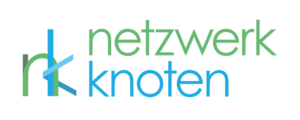The other day I talked to an incredibly nice person. She is a teacher for children with special needs and was telling me about how her university education was applicable to lots of different target groups. That reminded me of the blog article I was about to write — about how the focus of the intervention work of agile coaches should be on the what to do and not too much on what exactly the problem is. I tried to summarize how sometimes it’s not important to understand the problem deeply in order to solve it. I danced around it endlessly as to why and like in an attempt to free me, she said: „Yes, it’s being solution-oriented.“
Silence. I completely agreed. And to make this more complicated again: it is about not being problem-oriented, but solution-oriented, which, on a more human level, would translate to understanding the needs more than the problem itself. And, in turn, detect solutions that can start fulfilling that need. On the example of a child with special needs: I am sure the child would appreciate starting to work on small solutions instead of digging into where it is limited and why over and over again (which it most likely has for quite a bit of its lifetime).
Why does this principle of understanding the need over the problem apply in an extraordinary way in an organizational environment aka the business world?
Well, in an organization, by definition, there will be a myriad of perspectives. Asking a question about a certain issue to multiple people will most likely present you with as many perspectives as people you asked. As agile coaches and consultants, we try to remain as neutral as possible, which would mean not taking a side, and also not buying into one vs. the other perspective.
If we now ask about a problem, in order to understand how we could intervene, we’re faced with this multitude of perspectives and aspects of the issue at hand. While that may open the door to understanding, it will not directly open the door to action. Asking about what is needed however might be a first enablement, if to nothing else, then at least towards going this road towards the what without us the next time around.
Why should we not dig into the problem endlessly?
Reason A) Once we have gotten hold of the problem to solve, it might have persisted for quite a while already. Frustration might be high. And while hearing frustration can help relieve it, it is not news and will not lead us toward the future. We cannot change what has come before us. What we should therefore focus on, is obviously the future. Which is need fulfillment for as many stakeholders of said problem as possible.
Reason B) Well, problems change. Like particles, the minute we start observing them, they are most likely moving. Because most of the time, asking questions and thus initiating a thought process, most humans will by themselves begin small behavioral changes. If we do not factor behavioral changes into our intervention plans, people that are already doing something might feel unheard, unseen, and most likely unappreciated for making an effort. Which is not in our or anybody’s interest.
And Reason C) Additionally, let’s keep following the agile principle of working product over documentation. Of course, it is lovely to have fully documented (with additional drawings) what the problem is, it might be more helpful though to have a working solution or even the start of it.
And how do we get there?
My personal opinion is that behind every problem statement, there is a need. The same way, in Design Thinking, we formulate a challenge in order to then turn to the user and dig into what their needs might be — and out of those needs, move towards a brainstorming, and finally, prototypical solution.
Asking non-violent communication, there is a very limited list of basic needs. As a first step, this list might be consulted as a helping hand and identifier, in order to then specify e.g. the need for connection as to connection with who, in what form and frequency, and to what extent.
The magic of agile coaches is hearing or crystallizing those needs and then confirming them with the parties involved in order to develop formats that can condense needs into aligned action.
So, to end with a quotable answer: all we need to know about problems is the unfulfilled need they have emerged to give a voice to.

